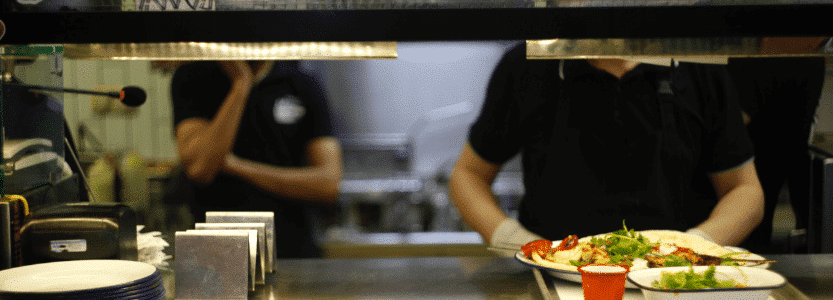School lunch: how should students pay?
Updated 19th July 2024 | 5 min read Published 21st March 2022

A healthy school lunch ensures that students have the nutrition they need throughout the day to learn
In fact, the Mount Sinai Adolescent Health Centre (MSAHC) found that students who miss lunch have a much harder time storing and retrieving information, making success in the classroom more challenging.
As illustrated by the MSAHC, lunch is undoubtedly a crucial part of any student’s day – but did you know that by relying on school lunches to be paid in cash, your school could be facilitating multiple lunchtime issues?
Tackling lunchtime issues
While using cash when paying for school lunch has been the norm for quite some time, many associated risks could be detrimental for both students and teachers.
Students lose their lunch money
‘I forgot my lunch money’ and ‘I lost my lunch money’ are two phrases every teacher has heard countless times.
Too often will students misplace or forget the money needed for their lunch, creating a negative knock-on effect for their learning.
However, the impact of forgetting lunch doesn’t stop with student learning, as often teachers are faced with difficult decisions and time-consuming tasks.
Impact on students
As previously highlighted, when students miss lunch, their capacity to effectively participate within class and learn is severely reduced, hindering their opportunity for success.
Impact on teachers
As a result of the lost money, well-meaning teachers may have to either informally lend money to their students or contact the parents to try and resolve the issue, which is not always easy to do.
A healthy school lunch is not always guaranteed
With cash, an element of uncertainty exists as to what students will actually buy.
While parents hope their children will have a nutritious school lunch, it’s not uncommon for students to visit the local shop on the way to school and spend their money on unhealthy sweets or snacks.
Additionally, even if students go to the canteen, there’s no record of what they’ve bought for lunch when using cash, meaning the issues around uncertainty persist.
Students face bullying
Unfortunately, in the UK, there is a stigma that still surrounds children receiving free school meals (FSM), and anything publicly flagging a child as having an FSM status risks potential discrimination.
Being harassed by their peers or eliciting a sense of shame is not uncommon and may make students shy away from FSM.
Students who access free school meals in schools that still use cash become easily distinguishable, through either having to highlight their name on a list or otherwise identifying themselves as receiving FSM.
Even if a sensitive system is put in place, the act of not handing over cash is an identifier.
By relying on cash, in some cases, students are forced to decide between their lunchtime meal or social ridicule, which is a decision no child should ever have to make.
We covered the issue in greater detail here.
Lunch money theft
A study from Alliance Against Crime found that cash is one of the most commonly stolen items within schools.
Students who carry cash daily are at more risk from theft; whether cash is taken via a physical confrontation or swiped in the changing room, the act can have a severe mental impact on the victim, not to mention the time implications for staff following up on the incident.
How can schools address these issues?
With all the above issues outlined, the immediate question is: should schools look to create a money-free lunchtime?
The simple answer: there isn’t one.
Forcing all parents to go cashless could alienate a number of families. Some households simply prefer to budget with cash. Perhaps cash budgeting is how some parents have always operated, or it’s a way to manage costs.
Instead, try positioning cashless school payments as the default payment option and stress the benefits to achieve parental buy-in.
Read our change management blog here to see how you can make your software implementation a success.
Changing the way students pay
To make your school/trust predominantly cashless, school meal management software is required.
However, while implementing software will, in theory, resolve issues around cash at lunch, steps need to be taken to ensure the system is used.
Why software integration is a necessity for cashless catering
For many schools and trusts, a number of supporting software systems or solutions are already in place, meaning parents juggle a variety of apps each day.
If you’re looking to add a cashless catering solution, you need to be mindful of your existing tech stack.
Not only will parents be somewhat resistant to change because cash is how they’ve always done it, adding another app to manage can often result in confusion and a lack of adoption.
How do you tackle this issue? Easy: software integration.
Take, for example, our IRIS BioStore solution for primary schools or our secondary schools solution, IRIS FasTrak, which both integrate directly with other tools such as parental engagement apps, providing an all-in-one solution.
With software integration, parents only have one school app to manage for all key student activities, reducing their admin and increasing overall usage.
How are free school meals (FSM) paid for with cashless payments?
Free school meals can be managed in a number of ways via software that negates the need for schools to manually manage entitlements.
Offering a web-based portal, software enables parents to pre-order their children’s dinner securely.
Once the meals are ordered via the app, students utilise their biometric identification – thumbprints – at the canteen to collect their food, meaning there’s no indication whether it’s an FSM.
IRIS Education can help your school
Check out our full range of education management solutions for more information on how to make school meal payments easier and more beneficial to your school.
